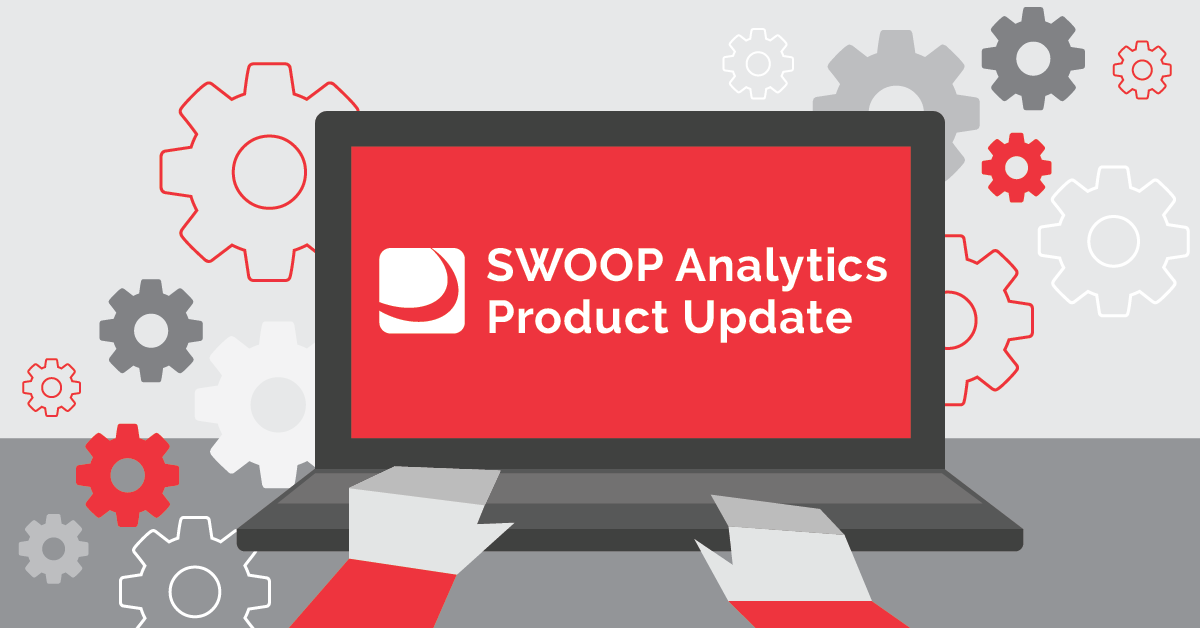
SWOOP Blog
Latest Articles
Blog Archive

Will Customers Buy Into Your Seller Persona?
You've analyzed your prospective market, built buyer personas for your perfect customer, and crafted your website and Facebook pages with all the social media bells and whistles to ensure that the right people are coming to view your content, products and services.
You also have social media monitoring tools in place to track your customers’ journey to you. Did they enjoy the experience? Is it simply enough that they stayed the journey? How can you be sure?

Will Customers Buy Into Your Seller Persona?
You've built buyer personas to ensure that the right people viewing your products and services. But what of buyers’ perception of you as a seller?
The Dying Art of Conversation
I started out composing this blog post with the intent of informing on how to start and sustain a good online conversation. As part of my research for the article I came across MIT Professor Sherry Turkle’s book on ‘Reclaiming Conversation: The Power of Talk in a Digital Age’. There is substantial material available for helping us conduct more effective online conversations. However, if you are like me, there is always that nagging doubt about whether online conversations ever achieve the level of fidelity and depth that a face to face conversation can take. Turkle’s book turned this nagging doubt into full scale distress. The book opens with a story about a junior high school that contacted Turkle with concerns students had lost the ability to naturally converse and develop empathy for each other. The school attributed this behaviour to their pervasive use of online communication devices. This immediately raised a question to me. By pushing more of our conversations online, are we actually harming future generations’ ability to converse in the way that most of us have taken for granted? Are we doing more harm than good?


What does AI have to say about the Trump vs Turnbull Leak?
Our weekend papers were filled with transcripts of the ‘robust’ conversation had between President Trump and Australian Prime Minister Turnbull on the issue of refugees. Some commentators were concerned about how ‘leaky’ the Trump administration had become. Others welcomed the transparency afforded by the transcripts, allowing the public to see beneath the public personas that many leaders are adept at maintaining. One thing is clear however, increased digitisation is providing us with at least the technical capability to track virtually everything anyone says to each other over digital channels. Stopping the leaks through purely governance mechanisms alone is like pushing the proverbial uphill. In the end we can only rely on developing the appropriate cultural and behavioural ethical norms.

Beyond Compliance: The Ethics Behind the New Data Protection Rules
As Europe looks to introduce its new General Data Protection Regulations (GDPR) in 2018, the arguments for and against more regulation continue to build.

Real Time Talent Identification
There is something seriously wrong with how organizations are going about identifying talent in their organizations. Substantially, most organizations today treat their staff as objects sitting on the warehouse shelves waiting to be picked off. The HR department will have devised capability characteristics that can be assigned to each individual using some tenuous process, so that they can be placed in the right shelf with similarly categorised staff. Some specially classified staff may merit a shelf of their own and therefore may be especially attractive to those fortunate enough to have been picked off the shelves earlier.

Stanford Peace Innovation Lab values SWOOP Insights
SWOOP Chief Scientist Dr Laurence Lock Lee recently met with Mark Nelson, who co-directs the Stanford Peace Innovation lab at Stanford University with behavior designer, social entrepreneur and mentor capitalist, Margarita Quihuis. Mark identified SWOOP’s ability to surface operational insights from interactions conducted in social networking platforms like Workplace by Facebook and Yammer, to enable a whole new level of research potential. Their current focus is on gender diversity, a big issue in Silicon Valley. He noted that many current gender diversity policies are doing more harm than good. This is where SWOOP operational data can be used to truly measure the impacts of gender diversity policy. We were able to show Mark some early results from one of our clients, which demonstrated how womens’ natural affinity to networking was indeed carried through into the workplace, significantly outperforming men.

Efficiency Versus Effectiveness: 57 Yammer Networks Can't Be Wrong
Studies of how organizations work have been around pretty much since the beginning of the industrial age. Now in the digital age, that stopwatch has morphed into a digital dashboard that lets employers and staff drive even greater efficiencies by conducting forensic analyses of how they spend their time at work.

Wanting to Transform your Business – Change the Logo?
Digitally enabled business transformation may be pervading our discussions at the moment, but in reality, this conversation theme is at least as old as the Internet, and more likely older. It was therefore with interest that I read a recent HBR article by Scott Anthony and Evan I. Schwartz which noted how often significant transformations fail. They then followed on by listing the transformations that their research identified as most successful and why. On top of the list were Amazon and Netflix; but also on the list well-known brands like Apple, Microsoft and Adobe. In reading the profiles of the companies on the list, virtually all of them had achieved their successful transformation through digitally enabled interventions. For Amazon it was the addition of their cloud services which helped grow their profitability. Netflix was able to take advantage of burgeoning and cost effective bandwidth, to introduce their popular streaming service. And of course Apple’s addition of the iPhone, iPad etc. revived their fortunes from a struggling computer manufacturer into the world’s most profitable company today.

The 6 Stages of Digital Workplace Maturity
How do you define digital workplace success? To me, a successful digital workplace is one that helps us get jobs done.

Facilitating Organisational Change with SWOOP
Just take a moment and think about the last 2 or 3 major organizational change programs that you have been party to (or a victim of). Invariably the change will have something to do with wanting to change the way people work and interact with each other in your organization. Perhaps it was triggered by a significant structural change, a merger, or acquisition. Perhaps it was around a major technology refresh. Or perhaps even a significant change in company strategy, triggered by a disruptive change in the marketplace. Whatever the reason, invariably you will be asked to adapt your behavior to become more adaptive, responsive and collaborative; because change has now become a constant.

Let's Chat: How to Spark Constructive Workplace Communications
In today’s digital workplace, the simple task of meeting for a chat takes on a whole new dimension. Will it be an online chat, and if so, will it take place over the phone, instant messaging, on a social network or through email?

Formulas for Success
There is something about ‘Formulas for Success’ that can be both appealing and irritating. The appealing part is of course the simplicity of it. If I could boil down the complexity of my life into a set of simple algorithms, then life would all of a sudden become much simpler. The irritating part is that we generally don’t believe that the world can be described simply as a set of formulas. What formulas do well, however is to cut to the chase. They remove the clutter and identify what core elements you need to concern yourself with. That is why I was attracted to this little excerpt from Adam Grant’s recent newsletter:

The Tide Has Finally Turned – Networks Eat Hierarchy for Breakfast
Apologies to Peter Drucker for hijacking his famous culture versus strategy statement, but for us, the recent 2017 Deloitte Global Trends tome signals a tipping of the scales that we have been anticipating, frankly, for decades. The Deloitte survey of some 10,000+ business and HR leaders across 140 countries voted “Organization of the Future: Arriving Now” as the number 1 human capital trend that concerns them most.

Getting Jobs Done Theory
It’s not the sort of labelling that we have come to expect from our academic theory makers. But it’s just the sort of ‘down and dirty’ language that can help us break out of the ‘business speak’ rhetoric, that we tend to turn off from, the moment we hear it. “What is the ROI?”, “Where are the hard tangible benefits?”, “Have we done a cost/benefit on this?”, “How can you demonstrate customer value?”.

How far are you willing to Trade Personal Privacy for Personal Benefit?
We were recently interviewed on the topic of the impacts on personal privacy that human centred analytics might have. Of course personal privacy was front of mind at the very inception of SWOOP; and we quickly adopted the privacy tag line that we are “SWOOP not SNOOP”. That said, we are also mindful of the very power of the insights that can be drawn about individuals, from what might look like innocuous data, which presents a very grey area for privacy protection.

A Test: Which Vendor Wins at Sentiment Analysis?
Natural language processing and sentiment analysis have been popular artificial intelligence (AI) research topics for decades now. In today's intelligent digital workplaces, however, we are becoming entranced by the potential of AI chatbots and the use of AI to actively participate in human led conversations.

Bridging the Knowledge Sharing/Problem Solving Divide
One of the most frequently cited reasons we hear for implementing an enterprise social network platform is to “enable our organisation to better communicate and collaborate across organisational boundaries”.

How You Can Benefit From Enterprise Social Middleware
I’ve been around long enough to recall a time when middleware was virtually non-existent. Then along came client-server computing and graphical user interfaces, and all of a sudden there was a huge demand to separate the backend engines from what we were seeing on the front end.










